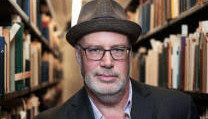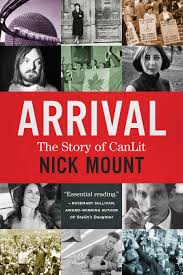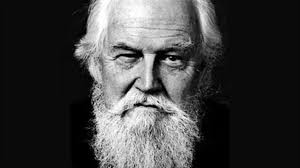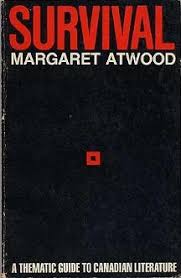I read my merry way through the 1970s — and it shaped my life.
I went to a secondary trade school and got a diploma in mechanical drafting. However an enthusiastic Grade 10 English teacher saved me by inspiring me to study literature. This was strange, considering I grew up in a home without books and had never read for enjoyment. Nonetheless I made up Grade 13 at night school over two years in preparation of university — sans a second language.
I enrolled at Trent in 1972 as a mature student and completed my honours BA in English before attending graduate school at the University of New Brunswick, where I completed my course work in 1977. I finished my thesis on Robertson Davies’ Deptford Trilogy in 1980.
To say I fell in love with Canadian literature wouldn’t be an exaggeration. It’s remained a passion for 45 years (sounds like a Stan Rogers’ ballad).
At Trent I took no fewer than four undergraduate courses in Canadian literature, including two fourth-year courses with Gordon Roper, a pioneer in the study of Canadian literature — and a lovely man. Hard to believe now, but at the time there were pockets of residual resistance to the study of Canadian literature.
Despite Trent’s establishment of seminal Native Studies and Canadian Studies programs and publication of the groundbreaking Journal of Canadian Studies, there were students and more than a few faculty members who thumbed condescending noses at this country’s developing literature.
Undeterred I purchased Canadian fiction, poetry, drama and literary criticism as released by the country’s burgeoning publishers. I read extracurricularly in spare moments during the school year and read comprehensively during summer vacation between shifts on the assembly line of an appliance manufacturer in my hometown of London which financed my way through university.
I saw my first ‘real live’ poet at Trent — the tall, willowy, white-bearded Earle Birney. This was before public readings and book tours were commonplace. I remember with deep fondness a three-day writers’ symposium that assembled the country’s most accomplished authors.
I have two lasting memories of Trent I will take to the grave. One is of Prof Roper teasing us about reading the draft of The Manticore prior to publication. Roper and Davies were close friends. The second is of Barbara Rooke, a Coleridgean scholar who taught me Romantic poetry, telling me that she and Margaret Laurence read my essay on Coleridge’s Frost at Midnight one afternoon over tea. I had compared the great ‘conversation’ poem to the river that flows both ways in The Diviners.
At graduate school I took courses in Canadian poetry and novel, in addition to a course on New England literature. I went to UNB in large part because of its commitment to Canadian literature under the guidance of Desmond Pacey and Fred Cogswell. In addition to publishing Fiddlehead literary magazine, a number of postgraduate students, including John Moss and David Arnason, went on to make meaningful contributions to our literature.
I continued to buy, read and study Canadian literature throughout my life. I was fortunate to land a job as an arts reporter at the Waterloo Region Record in 1986, after developing the first arts section at the Brantford Expositor over 1984-85. (BTW I worked in a bookstore, London’s Oxford Books, before I got my first newspaper job.)
Before retiring in 2015, I wrote many features and profiles on Canadian writers. I also reviewed hundreds of books. My love of Canadian literature branched into a passion for Canadian theatre and visual art.
I saw my first Canadian play — James Reaney’s Sticks & Stones — while I was still at Trent. During the 1980s and 90s (until cutbacks confined my travel to Stratford and Blyth) I reviewed theatre across southwestern Ontario (Niagara-on-the-Lake, London, Hamilton, Port Dover, Drayton, St Jacobs and Grand Bend) in addition to theatre in Toronto (Mirvish and Royal Alex, St. Lawrence Centre, Livent and Pantages, Factory, Theatre Passe Murielle, Toronto Free Theatre and Tarragon).
I wrote about Canadian art and artists, both historical and contemporary, and reviewed exhibitions in Toronto, Hamilton, Brantford, London, Blyth, Kleinburg and Woodstock, in addition to galleries across Waterloo Region.
Hopefully this biographical backstory conveys the sense of anticipation I felt when I learned Nick Mount was writing a history of the flowering of Canadian literature — my literature in my time. The moment Arrival was released I scooped up a copy.
Subtitled The Story of CanLit, Arrival is necessary reading for anyone, whether professional or casual reader, interested in this country’s literary culture. For it covers much more than fiction and poetry. It’s published by Anansi which emerged in the 1970s as House of Anansi. In 1972 it published Margaret Atwood’s Survival, arguably the most important critical study of CanLit ever published.
It would be hard-pressed to find a scholar better suited to writing such an overview. An English professor at the University of Toronto, Mount is a former fiction editor of The Walrus. He’s appeared on TVO’s Big Ideas and CBC Radio’s Sunday Edition. In 2011 he received the highest teaching award in the country. And he published an earlier study, When Canadian Literature Moved to New York.
Arrival is a lively, energetic, fun read. It hardly left my grip from first to last page; I couldn’t put it down. Mount not only finds humour, irony and paradox in the hothouse of CanLit, he expertly assimilates copious amounts of information — historical, political, economic and social as well as cultural — all presented in a breezy, entertaining manner. No stuffy academic here.
Readers get a cogent sense of the myriad forces that created and nurtured the explosion in writing that comprised CanLit. Post-war affluence, Baby Boomers off to universities (some newly built to handle the influx including Trent, Brock and Laurentian) nationalism, anti-Americanism in response to the Vietnam War and other perceived ‘evils’ and government support of the arts are some of the factors Mount identifies.
Mount invites to the party most of the people who played a role in the creative enterprise: writers, publishers. critics (including the pair of international giants — Northrop Frye and Marshall McLuhan), editors, translators, book retailers, book reviewers (Globe’s William French and Star’s Robert Fulford), journalists, printers, teachers (philosopher George Grant) and broadcasters (Robert Weaver, publisher of Tamarack Review and CBC Radio host of Anthology).
Before the 1960s our literature was colonial. You can count on your fingers the enduring books that were published previously highlighted by Susanna Moodie’s Roughing It in the Bush, Martha Ostenso’s Wild Geese, Gwethalyn Graham’s Earth & High Heaven, Frederick Philip Groves’ Fruits of the Earth, Sinclair Ross’ As for Me House, W.O. Mitchell’s Who Has Seen the Wind, Adele Wiseman’s Sacrifice, Ernest Buckler’s The Mountain & the Valley, Gabrielle Roy’s The Tin Flute, Hugh MacLennan’s Two Solitudes and Sheila Watson’s The Double Hook.
Canada’s Centennial heralded a coming of age — the arrival — of Canadian literature. During the 60s and 70s, it grew into a national literature, setting the stage for developing into an international literature. Over the same period there was parallel growth in theatre and popular music, which Mount touches on but does not examine.
Although Arrival focuses on the 60s and 70s, Mount properly begins his literary success story with the Massey Commission in 1949.
The Canada Council, a significant investor in CanLit, first convened in 1957. The same year McClelland & Steward, arguably the period’s most important publisher, introduced the New Canadian Library which put classic Canadian fiction reprinted in inexpensive paperback in the hands of students and general reading public. A couple of years later the Journal of Canadian Literature, the period’s most influential critical voice, began under the guidance of George Woodcock at the University of British Columbia.
It was during the 60s and 70s that Canadians became less obsessed with the books, theatre, visual art and popular music from elsewhere (television remained the exception). They started looking inward, focusing on burgeoning homegrown cultural products. For its part, the rest of the world began taking notice — albeit slowly but surely.
A half century later, this dynamic process continues. It’s becoming increasingly difficult to recollect the pre-Centennial Canadian landscape — perhaps ‘wasteland’ is the more accurate word .
As fascinating as the social, political and cultural contexts out of which CanLit prospered are, readers will most enjoy Mount’s informative, thumbnail biographies of the writers.
Some — Marie-Claire Blais, Mavis Gallant, Mordecai Richler and Irving Layton — made their literary debuts earlier but either solidified careers or published their most important books during the period.
But most are the literary lions and lionesses who emerged then and became prominent, if not always household names, including: Robert Kroetsch, George Bowering, Timothy Findley, Anne Hebert, Gwendolyn MacEwen, Farley Mowat, bp Nichol, Margaret Laurence, Dennis Lee, David Godfrey, Matt Cohen, Alden Nolan, Michael Ondaatje, Al Purdy and Rudy Wiebe.
A gleaming few — Margaret Atwood, Leonard Cohen, Alice Munro and Alastair MacLeod — became international literary stars.
I immersed myself in CaLit during the 1970s and afterward, I know it as well as I know anything intellectually, and there is little I can complain about with respect to Arrival. However, I do have a few quibbles, mostly the result of omission or misplaced emphasis.
Although the growth of Canadian theatre during the 60s and 70s is beyond the book’s scope, what little Mount says about it seriously underestimates both the significance of what occurred then and the impact it exerted on what followed. The rise of companies, playwrights, artistic directors, directors, actors and designers was extraordinary. In its own right, it was every bit as dramatic as the rise of literature. And this phenomenon spanned the country.
Just think of David Freeman’s Creeps, David French’s Leaving Home, Paul Thompson’s The Farm Show, Michel Tremblay’s Hosanna, Reaney’s The Donnellys Trilogy, George F. Walker’s Zastrozzi, Peter Colley’s I’ll Be Back Before Midnight, John Murell’s Waiting for the Parade, John Gray’s Billy Bishop Goes to War, David Fennario’s Balconville, Davies’ Question Time and Anne Chislett’s Quiet in the Land (premiered in 1981).
Mount glosses over popular music, but even mentioning Joni Mitchell, Neil Young, Ian & Sylvia and The Band without including Gordon Lightfoot is wrong. Lightfoot was the international Canadian recording artist who stayed home and, arguably, had the most in common with the writers.
Although Mount assesses Fifth Business as ‘excellent, among the best of its kind,’ in one of his highly subjective book ratings and even titles a chapter after the novel, he ignores Davies. While the author is a square peg in the round CanLit hole Mount drills, he was one of the period’s most significant authors — bar none. Although Davies published numerous plays, essays and novels before the 60s his greatest fiction began with Fifth Business in 1970.
Ditto for David Adams Richards. Although Mount gives biographical sketches of important East Coast authors Adlen Nowlan and MacLeod, his omission of Richards is perplexing. The publication of The Coming of Winter in 1974 and Blood Ties in 1976 marked the arrival of an exciting new voice in CanLit which has yet to be silenced.
Although Mount places Frye and McLuhan in historical critical context, and discusses Survival, he ignores the many seminal critical works published during the period. These were mostly thematic and non-evaluative, following Frye’s example (which Mount himself follows). However, they helped define the period and contributed to making CanLit worthy of critical discourse. A short list of my favourites includes Moss’ Patterns of Isolation, Lee’s Savage Fields, Eli Mandel’s Another Time, Tom Marshall’s Harsh and Lonely Land, W.H. New’s Articulating West, Laurence Ricou’s Vertical Man/Horizontal World and D. G. Jones’ Butterfly on Rock. This topic deserves its own chapter. (Interestingly Canada produced a couple of other international literary critics — Hugh Kenner and Leon Edele — who came to prominence during this period.)
Mount tries his best to cover the country with his critical reach, from East to West Coast including Quebec. Nonetheless Arrival remains Toronto-centric, both because of its importance and because Mount’s literary roots run deepest there. How else to explain the absence of Oberon, the Ottawa-based publisher which was one of the period’s important champions of homegrown writing. The same goes for Erin, Ontario’s artisanal Porcupine’s Quill, which has published handsome Canadian books of quality since 1974.
As mentioned above, these are quibbles. Fact is, I can’t recommend Arrival highly enough. Reading it was a pleasant hike down memory lane in the very best intellectual sense. Best of all, it’s encouraged me to return to some books I haven’t picked up in four decades. Reading them through ‘mature’ eyes will be interesting.
I’d like to leave readers with the flavour of Mount’s writing. Here’s one of my favourite passages, which reflects an interesting viewpoint — one I’m not sure whether or not I agree:
‘All literature, all art, he writes, ‘is more about things lost than things gained. But there is something deeply elegiac about this time, both in what it produced and the way we remember it. The CanLit boom was an epitaph for a Canada that no longer existed, because the moment of Canadian literature’s arrival was also the moment when such a thing as a Canadian literature no longer seemed necessary.’
Postscript: I’ve never ascribed to the term CanLit, which has always carried disparaging connotations. I’ve studied enough national literatures, including 19th century American literature and Irish literature at the turn of the 20th century, to see parallels between the developing national literatures of America and Ireland with that of Canada.






